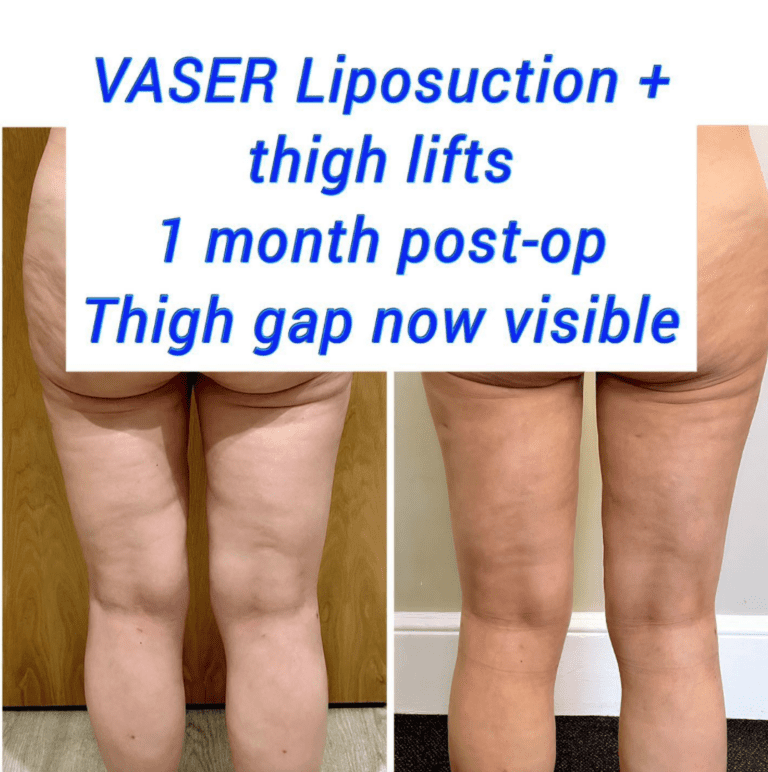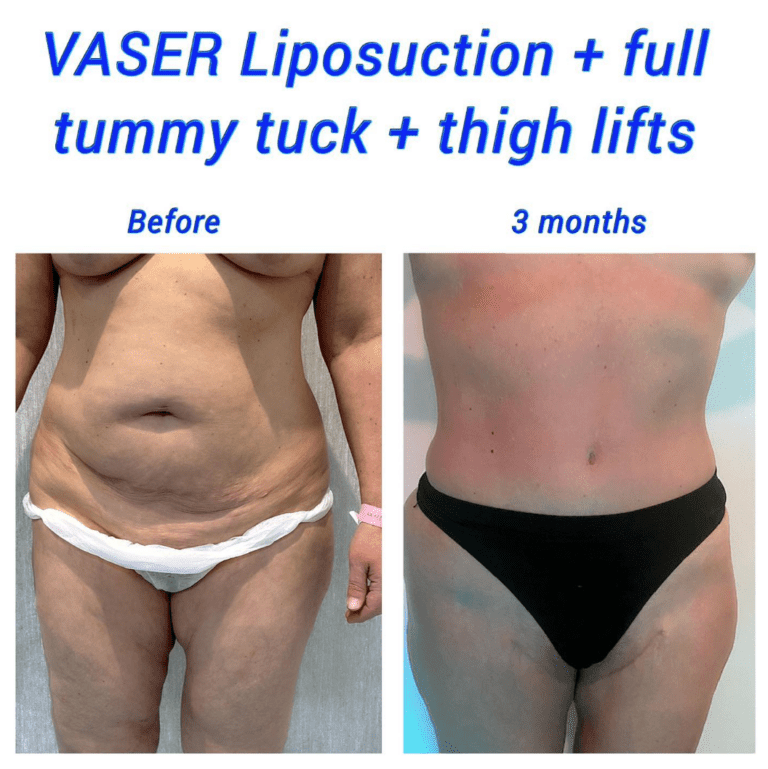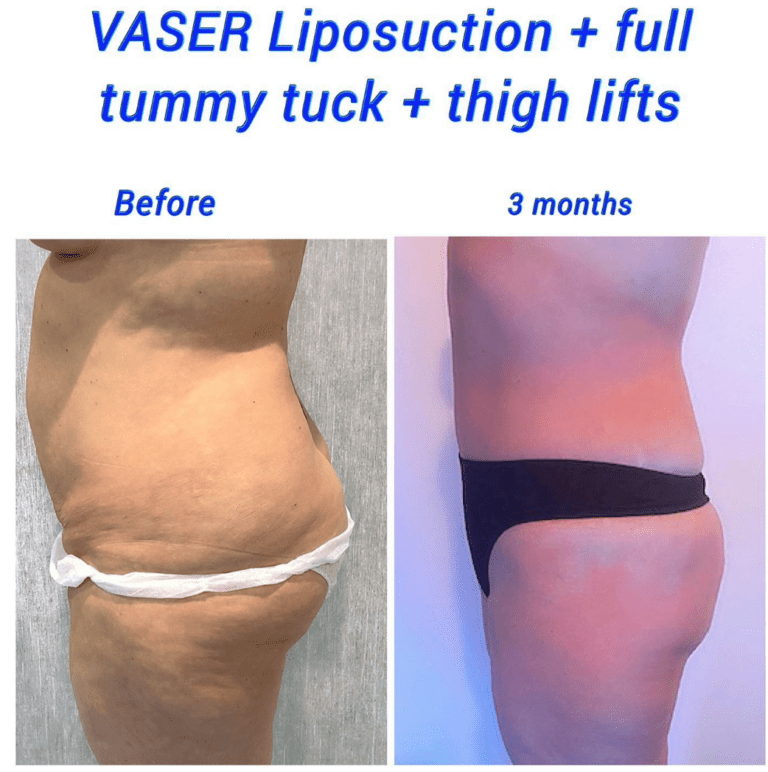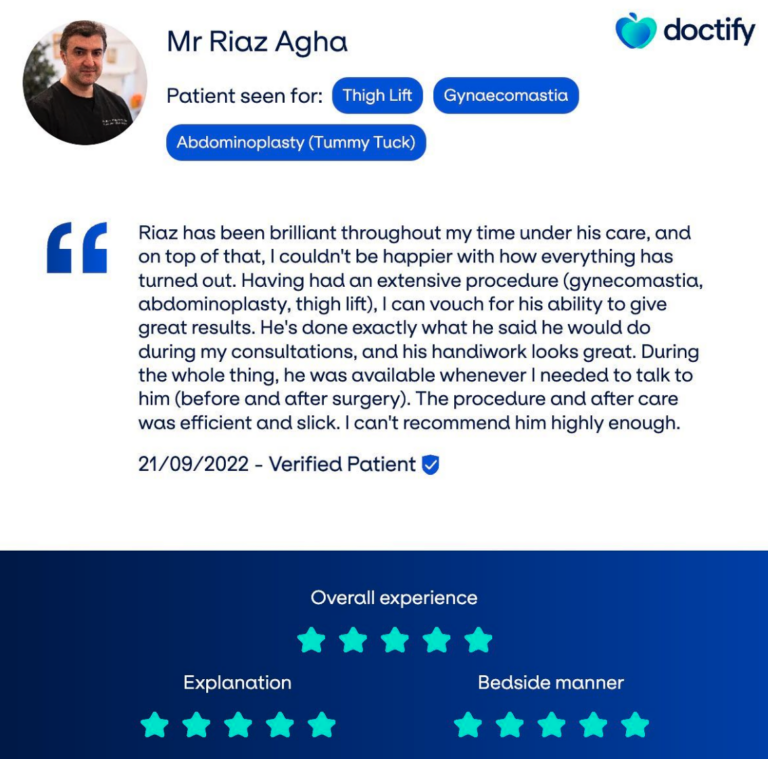Thighs are often one of the most difficult areas to target naturally through diet and exercise. It’s challenging to tighten skin on the thighs, especially after losing a significant amount of weight. It’s entirely normal to have sagging skin after weight loss.
If you don’t like your thighs, it can take a toll on your confidence. When you have worked so hard to lose weight, being left with a lot of excess skin can damage your self-esteem. If you’re thinking about getting a thigh lift, here’s everything you need to know about the procedure and what kind of results you can expect.
What is a Thigh Lift?

As the name suggests, the objective of a thigh lift is to lift and tighten loose and sagging folds of skin in the thigh area. Sagging and excess skin can be caused by many factors, including genetics, weight loss, pregnancies, large weight gain or loss, and ageing.
Thigh Lift: Quick Overview
- Surgery Time: 2 hours
- Anaesthetic: General
- Hospital Stay: Day
- Dressing and Garments: Dressings for 2 weeks, garments for 6 weeks
- Time Off Work: 1-2 weeks
- Exercise: 6-8 Weeks
- Mobile: 1 day
- Washing: Shower after 1 week
- Sleeping Position: On your back for up to 2 weeks
- Full Recovery: 6-8 weeks
Why Consider a Thigh Lift?
There are several reasons why patients consider a thigh lift. You may be thinking about getting a thigh lift if you want your thighs to be more in proportion and have a firmer look and feel. Another reason why patients consider a thigh lift is that they have gone through weight loss surgery and therefore have excess, flabby skin on the thighs.
What Happens During Thigh Lift Surgery?
In cases where a large amount of skin is involved, liposuction alone is not enough to give the results you’re looking for.
The surgery takes between 2-3 hours. During a thigh lift, your surgeon will make an incision in the inner groin crease. Excess skin is removed along with any associated excess fat. The skin is then sutured together. The procedure involves skin excision and liposuction to create shapely thighs in proportion with the rest of the body. There are different types of thigh lift surgery. Depending on the technique you use, there will be different incision placements and scarring.
Inner Thigh Lift (Medial)
With an inner thigh lift, your surgeon will make an incision in the groin area and remove excess skin and fat. The region from your knee to the groin is contoured, and the procedure is replicated on both thighs.
Outer Thigh Lift (Lateral)
This procedure is slightly different to the inner thigh lift and more complex. It usually involves recontouring the buttocks as well as the outer thighs. Scarring is more extensive with an outer thigh lift, and your skin will be less elastic. That means you need to maintain your weight after surgery to prolong your results.
What Happens During Your Thigh Lift Consultation?
During your consultation, you will have the opportunity to discuss your desired goals with your plastic surgeon. You will also discuss your medical history, such as past surgeries, medical conditions, allergies, and current medications. Your surgeon will talk you through the procedure and any risks associated with it. Then, they will determine whether you are a suitable candidate for the surgery.
What Results Can I Expect from a Thigh Lift?
If you have gone through pretty big body transformations, you may find that your skin doesn’t quite bounce back the way it used to. It’s normal for skin to lose its suppleness and elasticity as you get older.
A thigh lift can leave you with firmer, smoother, and younger-looking skin in the thigh area. By tightening loose skin and creating a more shapely body that’s in proportion, it can enhance the contours of your thighs. All this offers the following benefits:
- Boost your confidence
- Reduce the appearance of stretch marks
- Increase the look of muscle definition
How Long Does it Take to Recover From a Thigh Lift?
The recovery process can differ from patient to patient, depending on how complex your thigh lift is. In general, most people need to take it easy and get plenty of rest in the first couple of weeks following the surgery. You should be able to resume normal activities in 4 to 6 weeks after you get the all-clear from your surgeon.
Immediately following your surgery, you will have some bruising, swelling, and soreness. In the first 2 weeks, you should take it easy, watch for signs of infection, be mindful when you move to avoid putting stress on the incision areas. You may need to wear a compression garment for the first month to optimise your results, but your surgeon will discuss this with you.
After 3 to 5 weeks, the swelling should have subsided. If you’re not in pain, you can resume driving and walking after 2 to 3 weeks. You should wait until at least 6 to 8 weeks before resuming any heavy lifting or jogging.

What Will Your Scars Be Like After Surgery?
With an inner thigh lift, your scars will be in the groin area. However, for patients that need a larger amount of excess skin and fat removed, the scar may extend along the inner thigh. For an outer thigh lift, the incision can be in the groin and extend around the hip and possibly the fold of the buttocks. Your surgeon will do everything possible to conceal scarring, but there is visible scarring from a thigh lift.
How Do You Prepare for Thigh Lift Surgery?
Ahead of your surgery, you should stop smoking and avoid certain medications. You should maintain a steady weight before your surgery and stay hydrated. Being as healthy as possible will help you prepare for your surgery.
Who is the Ideal Candidate for a Thigh Lift?
The ideal candidate understands the seriousness of the decision when choosing to undergo a thigh lift. They have reached their ideal body weight and maintained that weight for at least six months. The best candidate is a non-smoker who is in relatively good health, follows a healthy diet, and participates in regular exercise.
Who Might Not Be Suitable for a Thigh Lift?
If you have significant health problems, smoke, and have unrealistic expectations, you may not be suitable for surgery. Also, if you are yet to achieve your target weight, you would need to delay your surgery to achieve the best results possible.
Are Thigh Lift Results Permanent?
If you maintain a stable weight and healthy lifestyle, the results are long-lasting. Nothing can stop the ageing process, so an increase in skin laxity can develop as you grow older. While plastic surgery can slow this process down, it doesn’t stop it altogether. In general, results from a thigh lift are long-lasting with excellent patient satisfaction.
What’s the Difference Between Liposuction and a Thigh Lift?
For many people, the thighs are a troublesome area. It’s common for thighs to be the target for liposuction. So what’s the difference between a thigh lift and liposuction? Liposuction is effective in getting rid of excessive fatty tissue. However, a thigh lift will get rid of excessive skin and some fat. So, depending on your situation, it will be more effective to have a thigh lift than liposuction alone.
Neither treatments are a substitute for weight loss. To achieve the best results, you should be at your target weight goal. It’s normal to combine a thigh lift with another treatment for a whole lower body rejuvenation package. A combination of treatments may help you achieve your desired look. This is why you need an expert plastic surgeon to guide you to determine the best route to take.
Before and After Thigh Lift Surgery
Potential risks of thigh lift surgery, include:
- Infection
- Bleeding
- Hematoma
- Anaesthesia risks
- Skin and or fat/necrosis
- Fluid accumulation
- Pain
- Swelling
- Poor wound healing
- Poor scarring
- Nerve injury
- Contour irregularity
- Seroma
- Over/under correction
- Asymmetry
- Damage to other structures
- DVT
- PE
- Chest infection
Further Reading:
- 7 Aftercare Tips for Thigh Lift Surgery
- Thigh Lift: Procedure and Results
- 4 Foods for a Healthy Recovery After Plastic Surgery
- How to Prepare For Your Cosmetic Treatment
- Why Do You Need to Wear Compression Garments After Plastic Surgery?
- 4 Foods for a Healthy Recovery After Plastic Surgery
- How to Sleep After Thigh Lift















